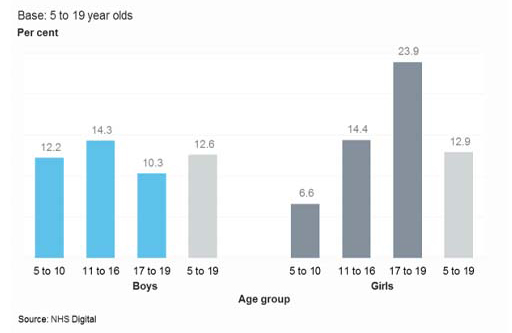1.2 Trends by age group and sex
In the next activity, you’ll look at the two graphs in Figure 4 separating the 2017 data into smaller age groups.
Activity _unit2.1.3 Activity 3: Examining sex differences
According to the figures in these graphs in Figure 4, in 5 to 10-year-olds, almost twice as many boys as girls have a mental disorder and in 17 to 19-year-olds the reverse is true. In fact, more than twice as many girls as boys disclose a mental disorder in the 17–19 age group.
Can you think of any reasons why this might be the case? Jot down a few notes to yourself for future reference.
Discussion
You may have thought about differences in the ways boys and girls develop physically and mentally over childhood and adolescence, and that the social pressures on girls may be more intense than for boys as they get older. Perhaps you can think of some young people you know with mental health issues that you have personal theories about.
During the course, you will unpack the knowledge underlying these figures and explore what is happening both physically and socially during adolescence that might help us to understand these differences. Before that, it’s worth going ‘back to basics’ to consider what ‘mental health’ actually is.

